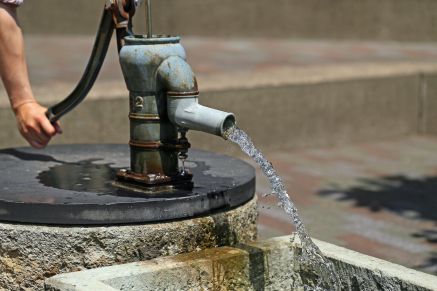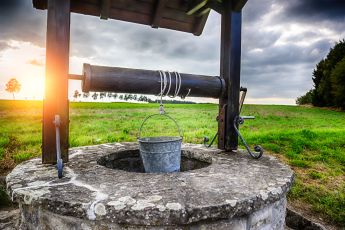What does a well do?
A well can be thought of as a bucket that you can put something into and take it out from the bottom. If you have something to put into your well, then it will help you get water from your aquifer. If there is nothing in your well, then it will not be able to draw water from your aquifer.
As mentioned earlier, water moves through pipes like this because of its physical properties; some parts are more permeable than others and some parts have different densities from one another, while some parts have different lengths or diameters while others have different widths or depths.
The way water moves through pipes is dependent on these physical properties that affect how much water can flow through each part of the pipe and how fast the water flows through each part.
Water flows through a pipe due to the difference in its density as it flows through each part of the pipe and due to friction between each part of the pipe as they rub against one another while they flow at different speeds.
When is the well going to dry?
When there is no water left in the aquifer, then the well is going to dry. Water that flows out of the well can either be carried away by natural means or it can be carried away by humans. It will take some time for the water to completely drain out of the well.
However, when it does drain out of the well, then it will be completely empty and will not be able to hold any more water. The well can be emptied when it has been completely drained out of water because it has reached its capacity, which depends on its depth and diameter, length and depth, width and depth.
This can only happen when there is no more water left in your aquifer or if you are not drawing enough water from your aquifer or if you have been drawing too much water from your aquifer or if there is an excess of pollution in your aquifer or if there is an excess of organic matter (such as a lot of leaves) in your aquifer which would prevent the roots of plants from getting any nutrients to survive.

What is well made of?
First, I want to say that a well is made of a lot of things. It is made of a pit or hole in the ground that holds water. You can have a very small well with just a tiny hole in the ground. You can have an extremely large well that has hundreds of feet deep and wide.
The type of material used to make your well depends on the depth and width of the well you are building. You will need to make sure your area is not too close to any nearby water bodies like rivers, lakes, etc.
This will help you avoid having any issues with leaching minerals into your water supply. Also make sure there are no nearby sinkholes which may be collapsing at any time. If this happens you may have huge problems with your well collapsing on top of your head!
Can we build our own well?
No. You cannot make your own well. This is because you will have to do a lot of research before you can make a well that works for you. There are so many things that you will have to consider when making a well, such as the water table and its depth, the soil type and its composition, the length of pipe required and so on.
If you do not have enough knowledge, then it would be very difficult for you to create a well that works for you because there are so many factors that need to be considered before creating a well that works for you.
How close to a house should a well be?
Wells need to be located near a house for at least one reason: A person needs water, so he will drill a well, and the water from that well will be used by his family. The water is the important factor here, not the actual well itself. The well is only important as long as it can provide water to a human body. That is why wells need to be located close to a house. As stated earlier, wells do not provide their own power; they require an electrical connection to some sort of electric generator/power station or power grid (if applicable).
This means that they must have an adequate distance from any houses or other structures that they are providing water for. In general, houses require approximately 1 square meter of space per 1 KW/h of electricity produced by the generator (or solar panels). So if we assume that the generator produces 10 KW/h (for example), then it requires 10 square meters of space within which its power station is located; if there is no space available within this area, then the generator will not work.


